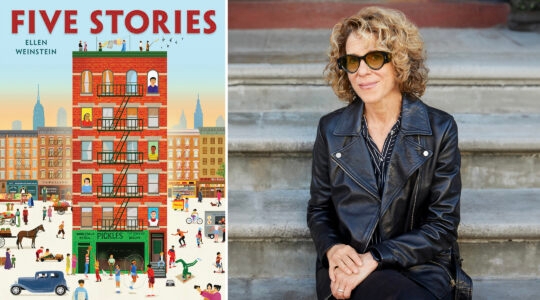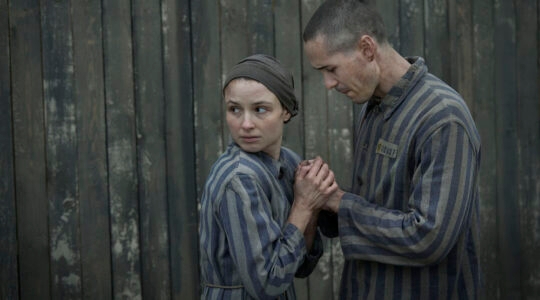When I arrived at the Hilton in midtown Manhattan Sunday night for the International Conference of Chabad Lubavitch Shluchos — the women’s version of the men’s emissary conference that took place in Brooklyn in November — my media contact instructed me to turn right and follow the ladies.
It wasn’t hard. Some 3,000 women — mostly from the United States, but in true Chabad fashion representing a cross-section of the movement’s global corps of emissaries — were dressed to the nines, tottering in their heels and designer dresses into the hotel’s dimly lit ballroom.
The news release announcing the conference promised notions of Hasidic women’s insularity would be “shattered” on Sunday, and the event didn’t disappoint. No other group of Hasidic women are nearly as fashionable as the ladies of Chabad. But sartorial diversity is far from the only thing that distinguishes the women’s gathering from the men’s event populated by thousands in identical black suits.
Yes, both conferences are marked by the roll-call, in which enormous video screens scroll photographs of the hundreds of Chabad outposts around the world, and an annual “class picture” of the emissaries shot on Eastern Parkway in Brooklyn, near Chabad world headquarters. And both function largely to bolster the spirits of emissaries who toil away in remote locales far from the supportive embrace of large metropolitan Jewish communities.
But the capstone banquet on Sunday — held, like most Chabad events, under the watchful gaze of the late Lubavitcher Rebbe Menachem Mendel Schneerson, whose portrait was reduced on the banner behind the stage to equal size with that of his late wife’s, Chaya Mushka — had a more informal, confessional tone then the men’s version. Speakers referred to their fellow emissaries as sisters and described, in an unspooling stream of personal anecdotes, the triumphs and challenges of their chosen life. One speaker referred to being an emissary as a kind of “give and take” — not the sort of language one tends to hear from the men, who describe their missions in the uncompromising tones of the religiously charged.
At one point, a couch was moved to the front of the stage and two emissaries — one from Alaska, one from Russia — talked Oprah-style about what it’s like to live an observant lifestyle in the middle of nowhere. Not that their audience didn’t know. They’re all doing the same thing. But there seemed to be a value in simply hearing it.
“Talk about sacrifice,” urged Baila Olidort, the editor-in-chief of Lubavitch.com who led the couch session.
“So Esti,” she asked Esther Greenberg, the Anchorage emissary, “how did you manage?”
At another point, Olidort turned to the women as if to drop a bombshell. “In your heart of hearts,” she asked, “have you ever had enough?”
That’s not a query one is likely to hear from the men, who are so intent in firing each other up it’s hard to imagine there’s room left for doubt. The men’s banquet has the feel of a pep rally. The women’s, a group therapy session.
The keynote was delivered by Chanie Lipskar, who with her husband Sholom runs the Chabad center in Bal Harbour, Florida. Outfitted in a shimmering black dress with elaborate folds and a shiny brooch, Lipskar described how she was nearly killed in a fire when she was pregnant with her daughter. A fireman who sat outside the classroom where Lipskar taught every day — the Chabad school had been condemned by the department and required a fireman on premises at all times — burst into her bedroom and placed his mask over her mouth.
“Baruch Hashem, our daughter was born on our due date, a good and healthy child,” Lipskar said to applause. “My cough — thank God, I’m not doing it right now — is a conscious reminder that Hashem saved my life so that I should continue with my divine purpose, to continue representing him.”





